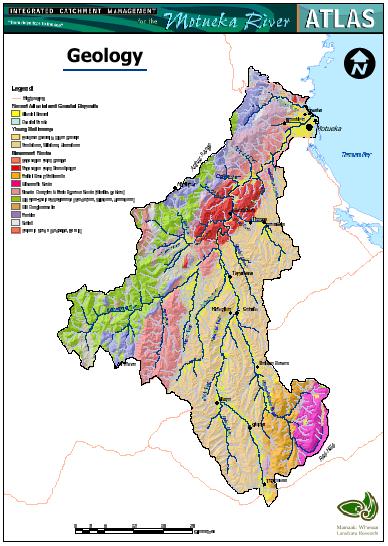The Motueka Catchment is geologically very complex compared to many
other South Island catchments. A wide variety of rock types are present.
Ultramafic and old sedimentary rocks form the mountains at the
south-western end of the Richmond Range in the headwaters of the Motueka.
Similarly, the headwaters of the western tributaries of the Motueka,
and part of the middle reaches of the Motueka, are underlain by a complex
array of sedimentary and igneous rock types including:
- old basement rocks of Devonian to Cambrian age that include
indurated and faulted marble, limestone, greywacke, argillite,
diorites and gabbros;
- deeply weathered and highly erodible granitic rocks (granite and
granodiorite) of the Separation Point Suite (Cretaceous);
- younger and less-indurated sediments (Eocene to Miocene marine
mudstone, sandstone, limestone).
The hilly terrain of the Moutere Depression, making up most of the
eastern side of the catchment and the Motupiko and Tadmor valleys, is
underlain by much younger alluvial sediments of the Moutere gravel
formation.
This is a thick (0.7 km near Tapawera), weakly indurated, and deeply
weathered gravel of late Pliocene to early Pleistocene age, dominated by
greywacke sandstone clasts, mainly <200 mm diameter, in a silt and clay
matrix that cements the clasts together. |

|